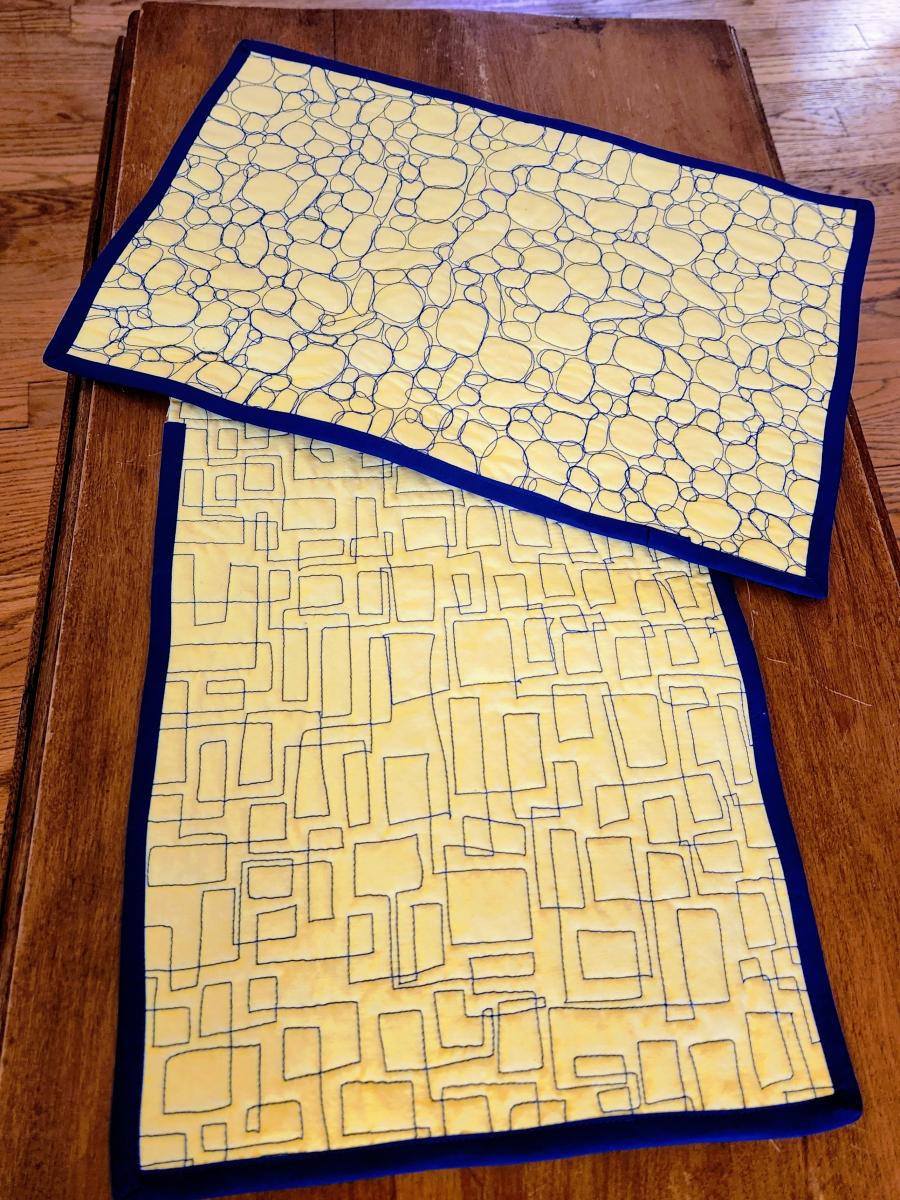
Skill Level
Novice
Project Required Badges
Placemats as a Freestyle Quilting Sampler
Making smooth continuous freestyle shapes on the long arm quilter takes practice. Why not try several types for a single project? You can try flowers, spirals, zig zags, stones, woodgrains, words, single line drawings, wanderings, knit look - the options are many! A set of six placemats lets you practice six techniques. You need to be badged on the long arm quilter and basic sewing machine and/or serger machine.
Supplies for 6 placemats include:
- 1 ½ feet of 45” wide fabric for the top
- 1 1/2 feet of 45” wide fabric for the bottom
- 1 1/2 feet of 45” wide thin batting for the middle
- Machine quilting thread to match or contrast the fabric
- 10 yards of ½ inch double folded bias tape to match or contrast fabric OR decorative serger thread to match or contrast fabric - wooly nylon works well
